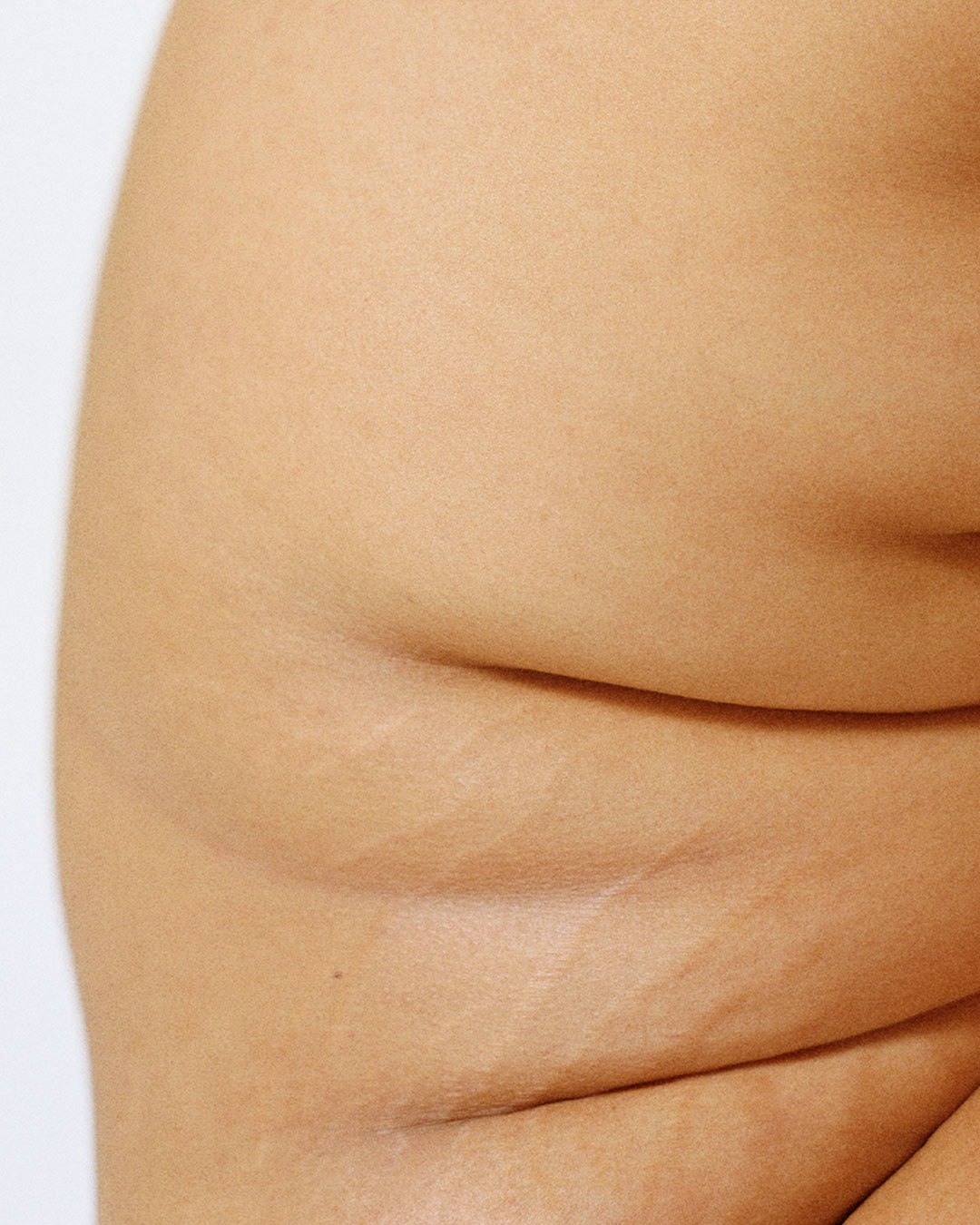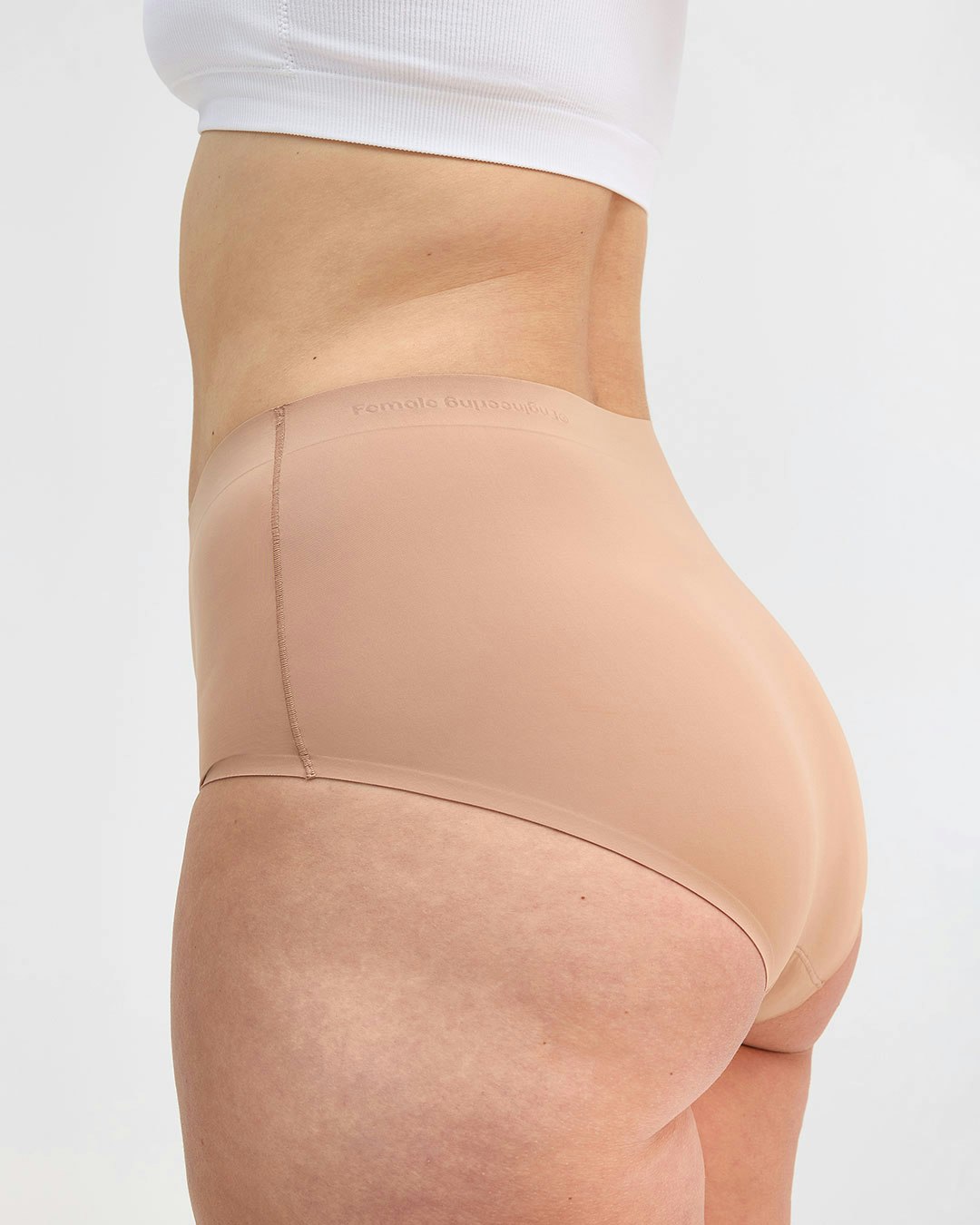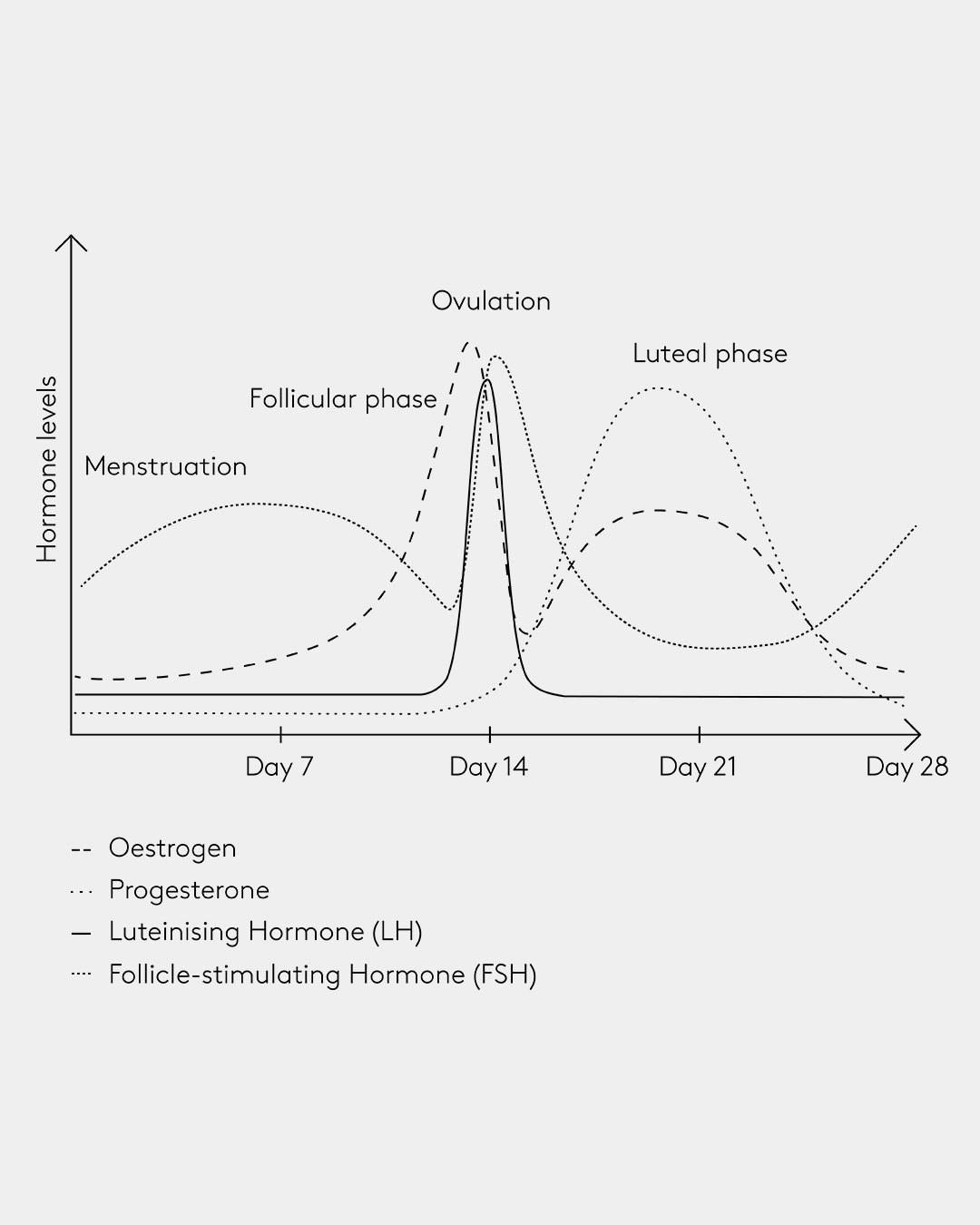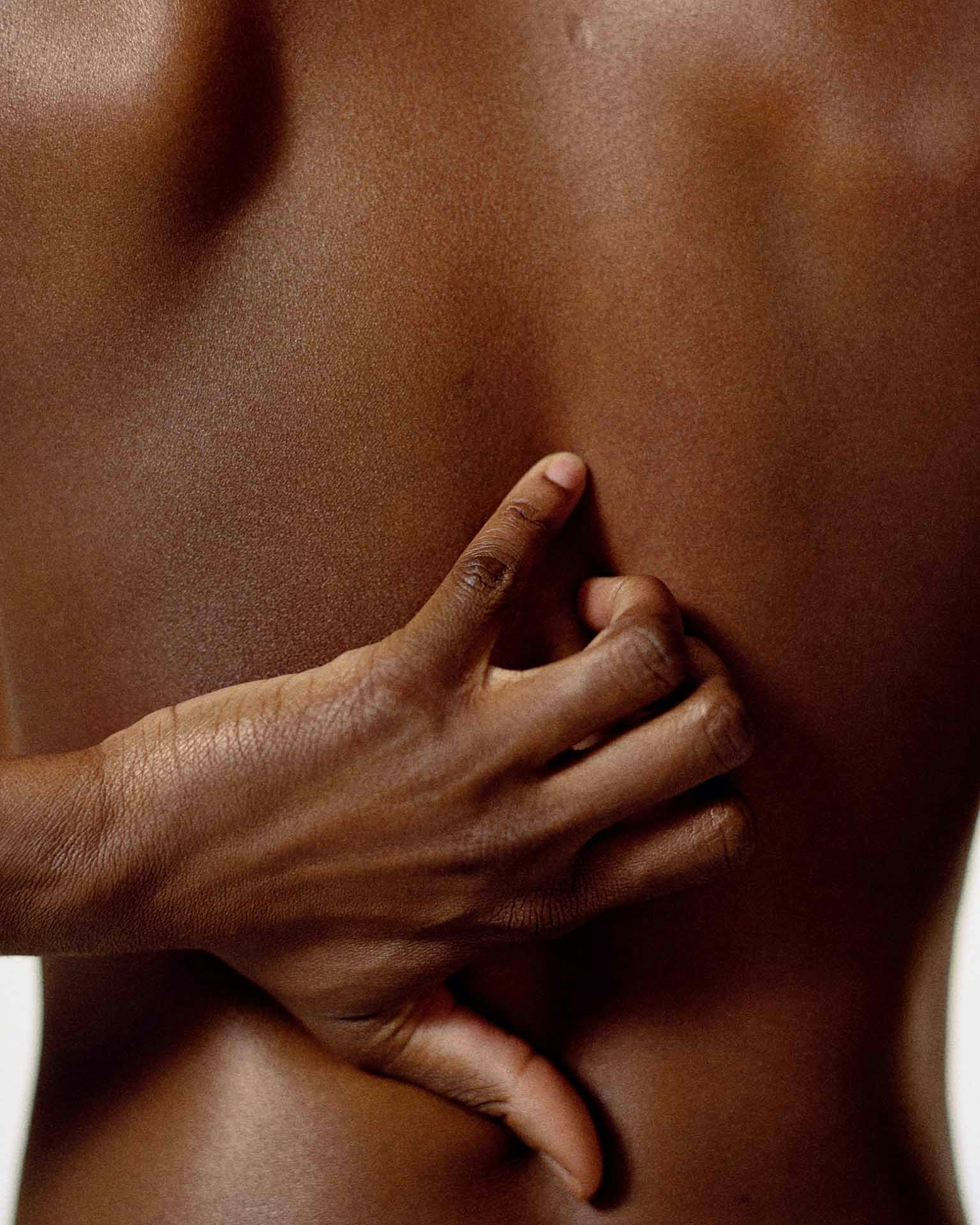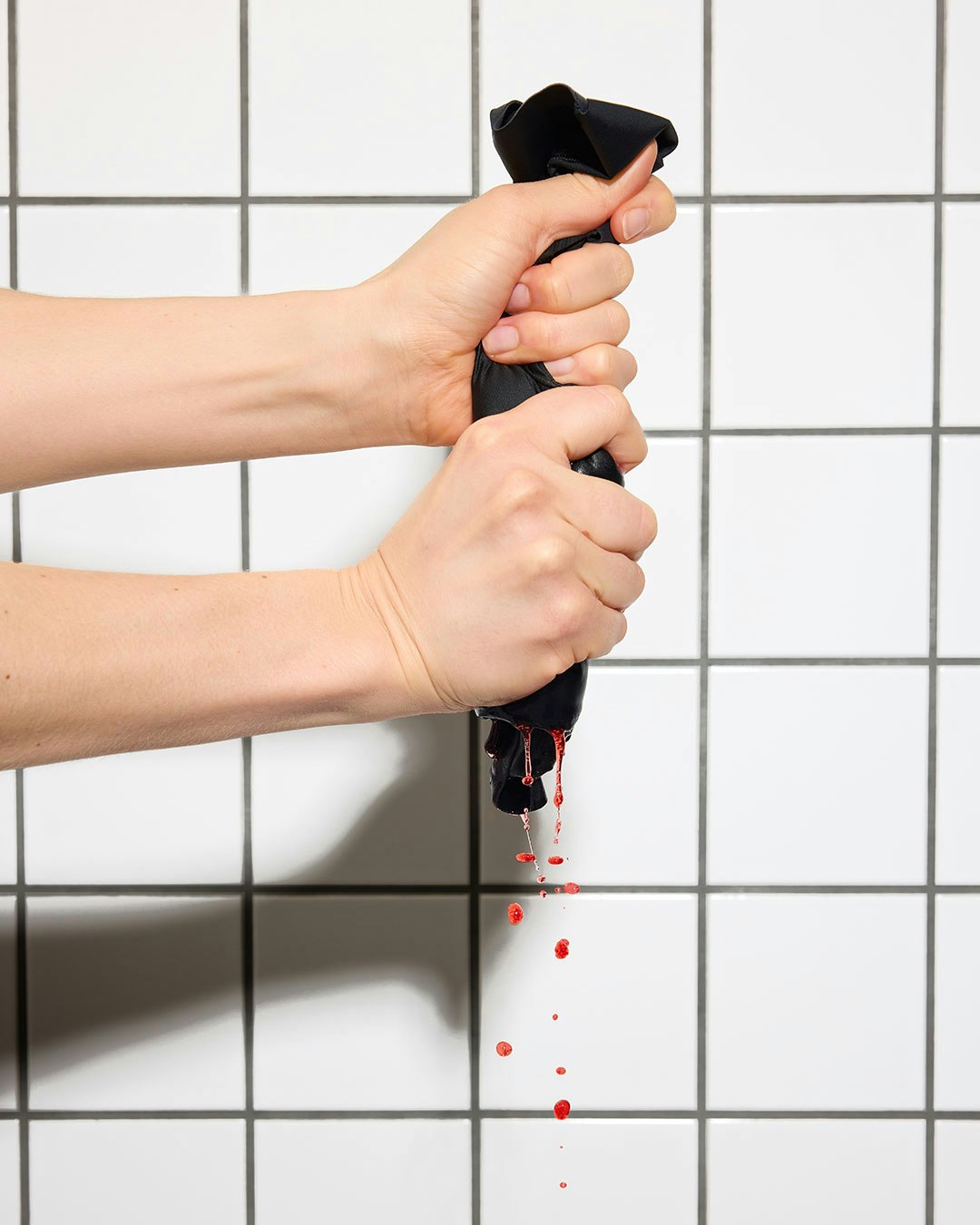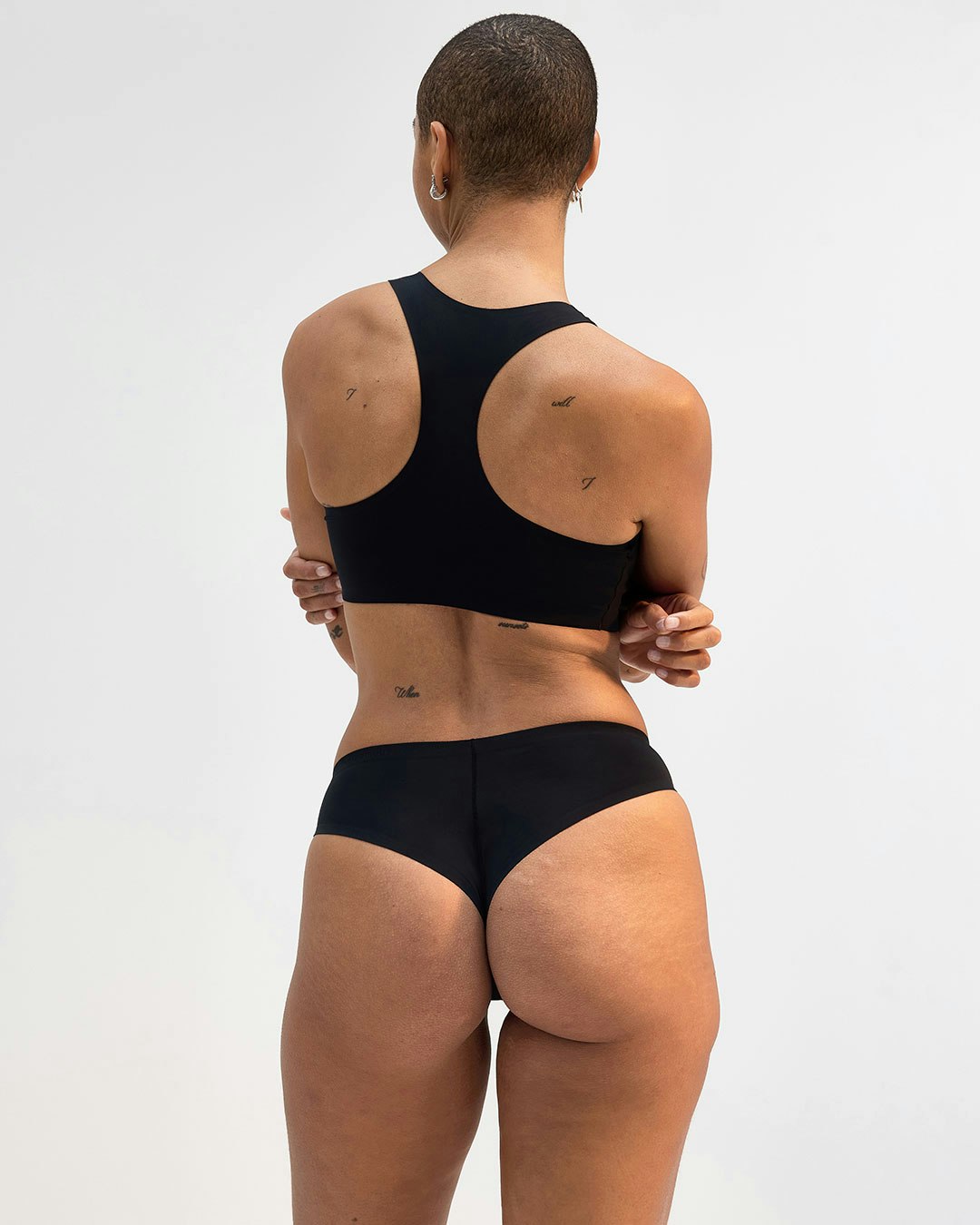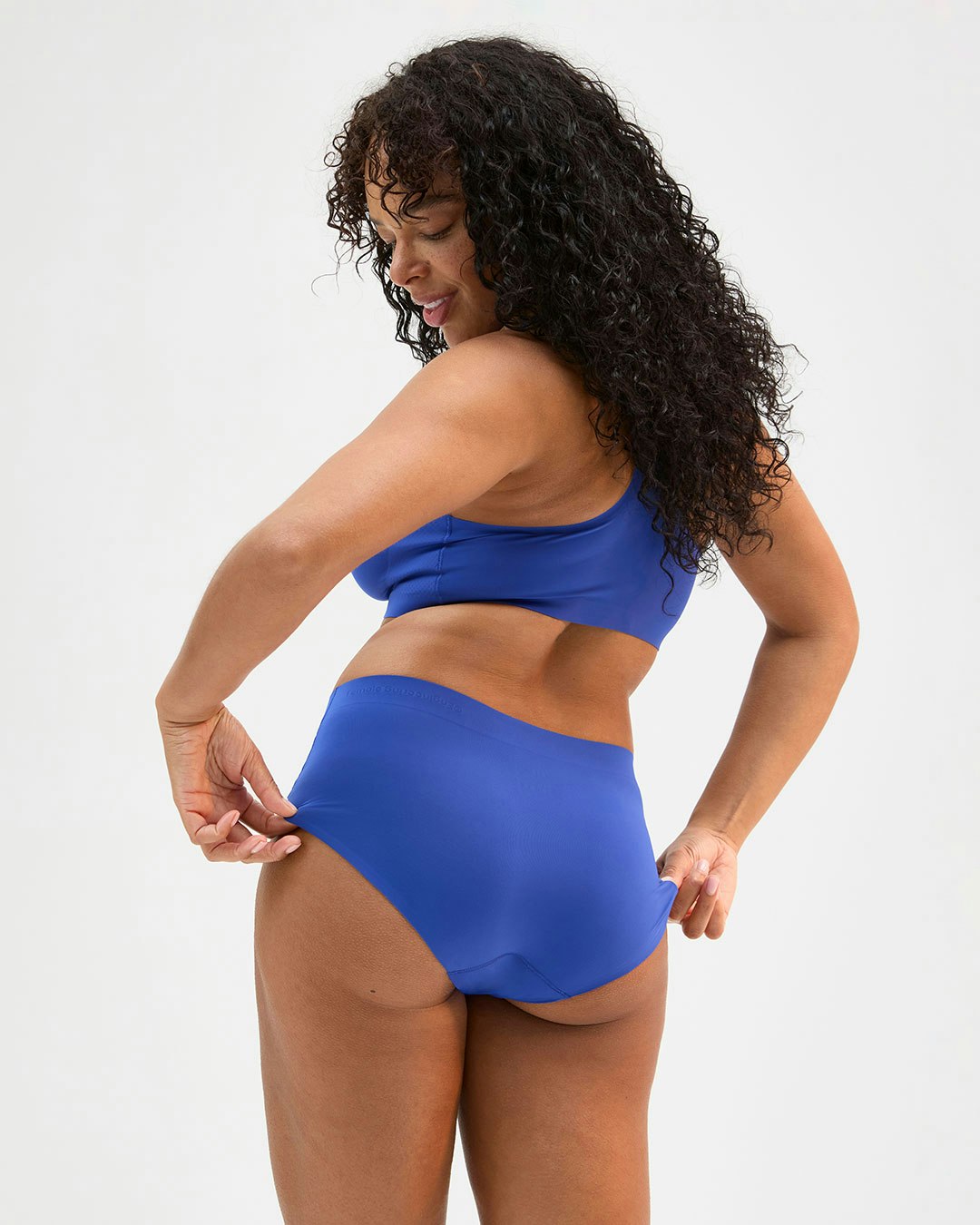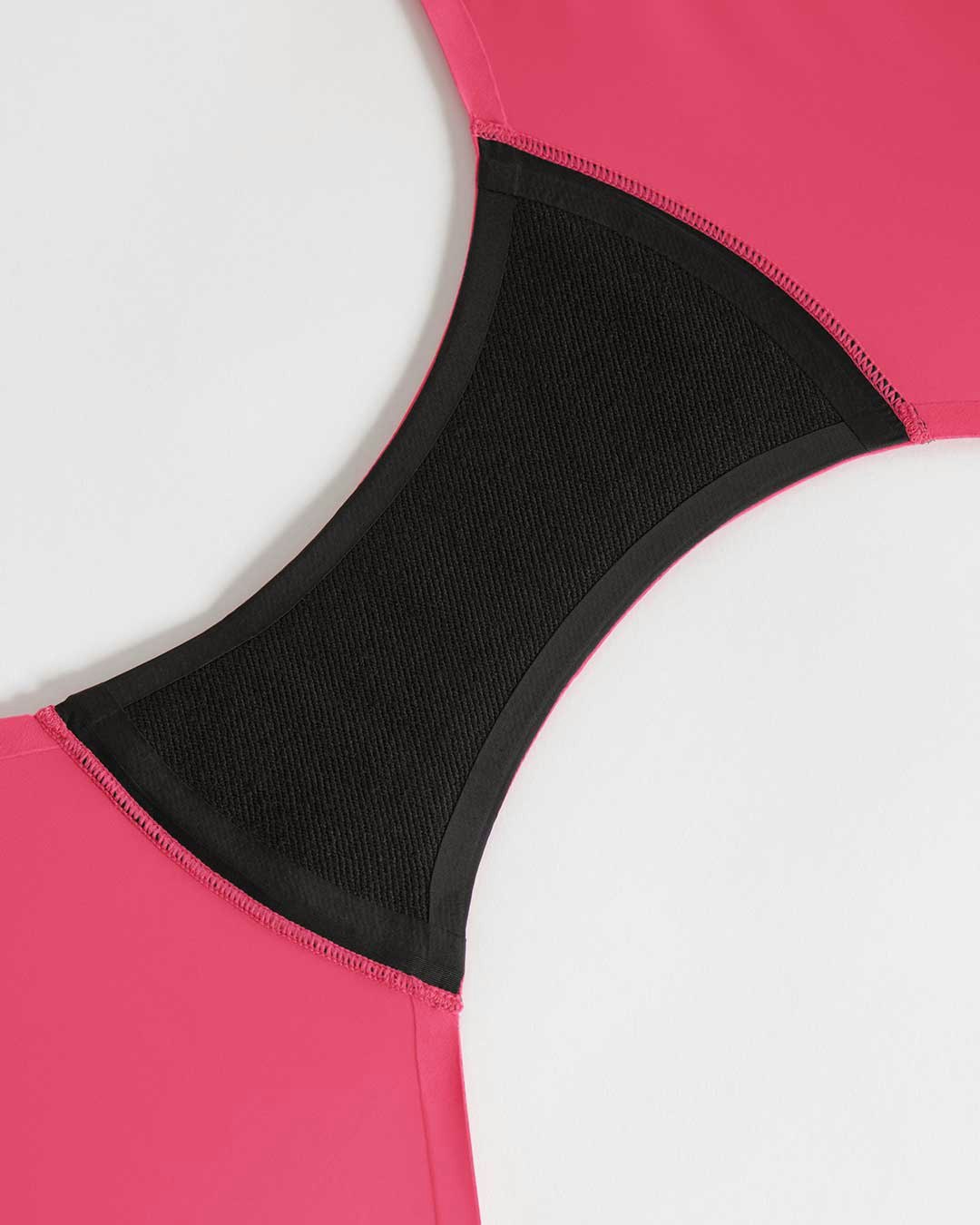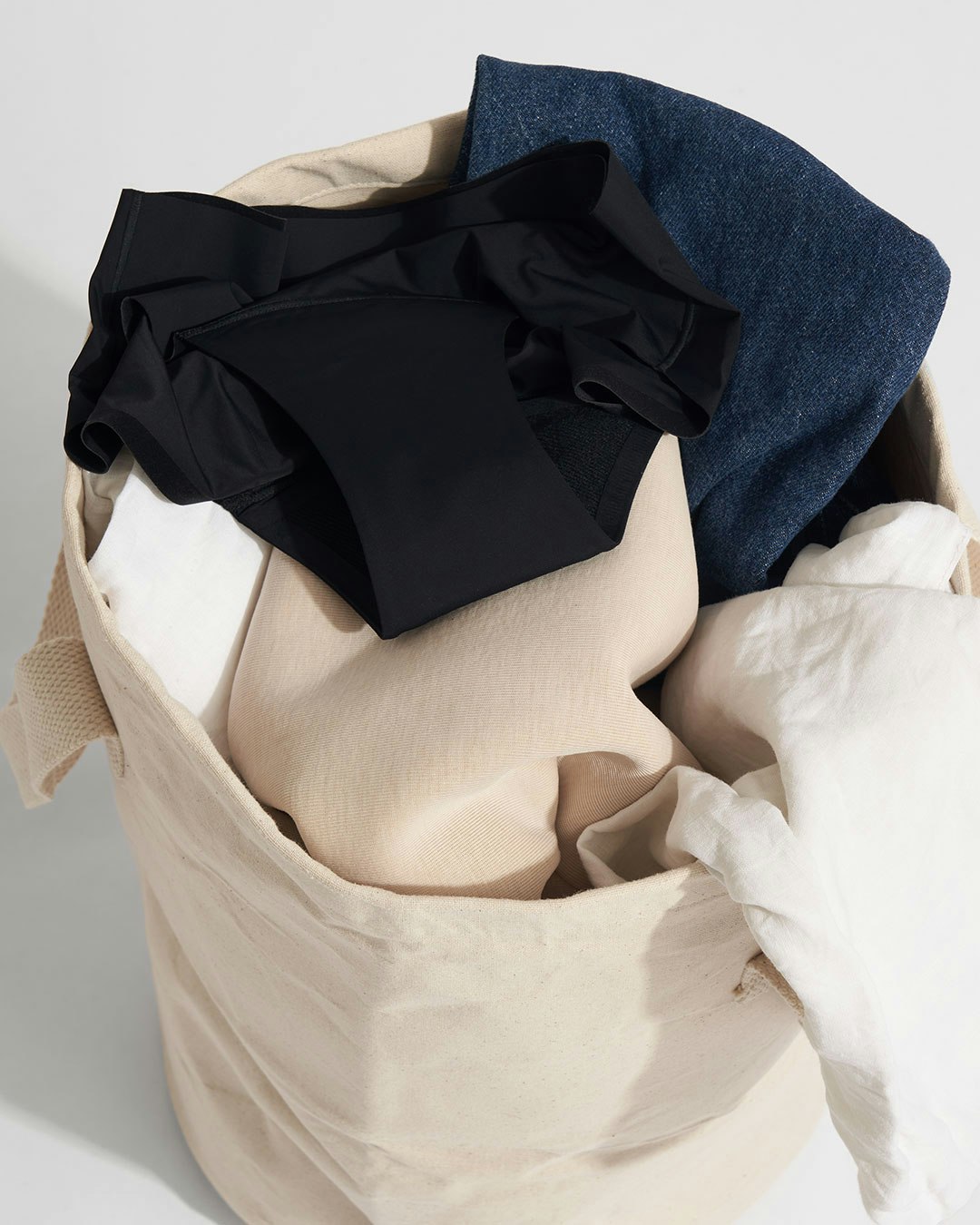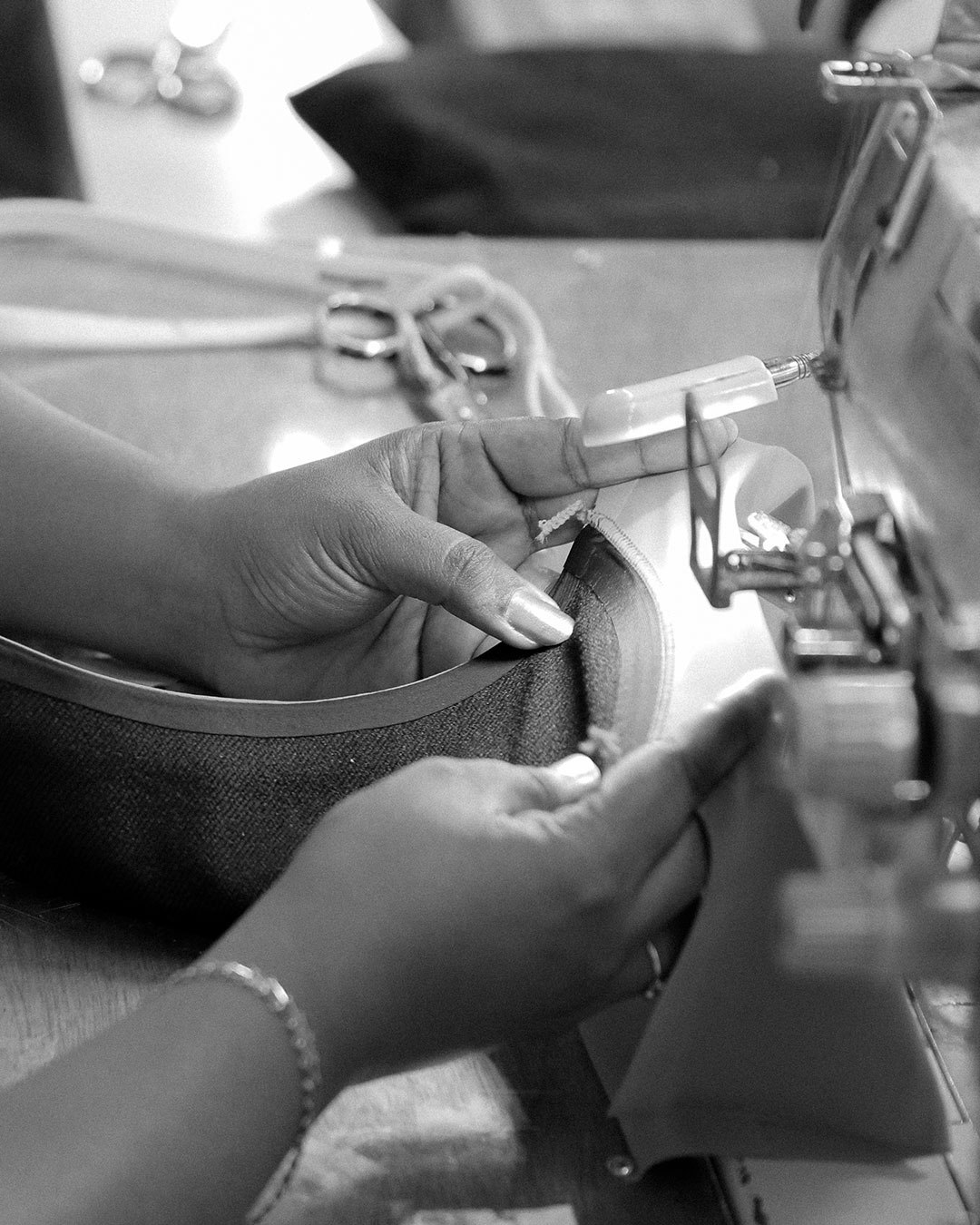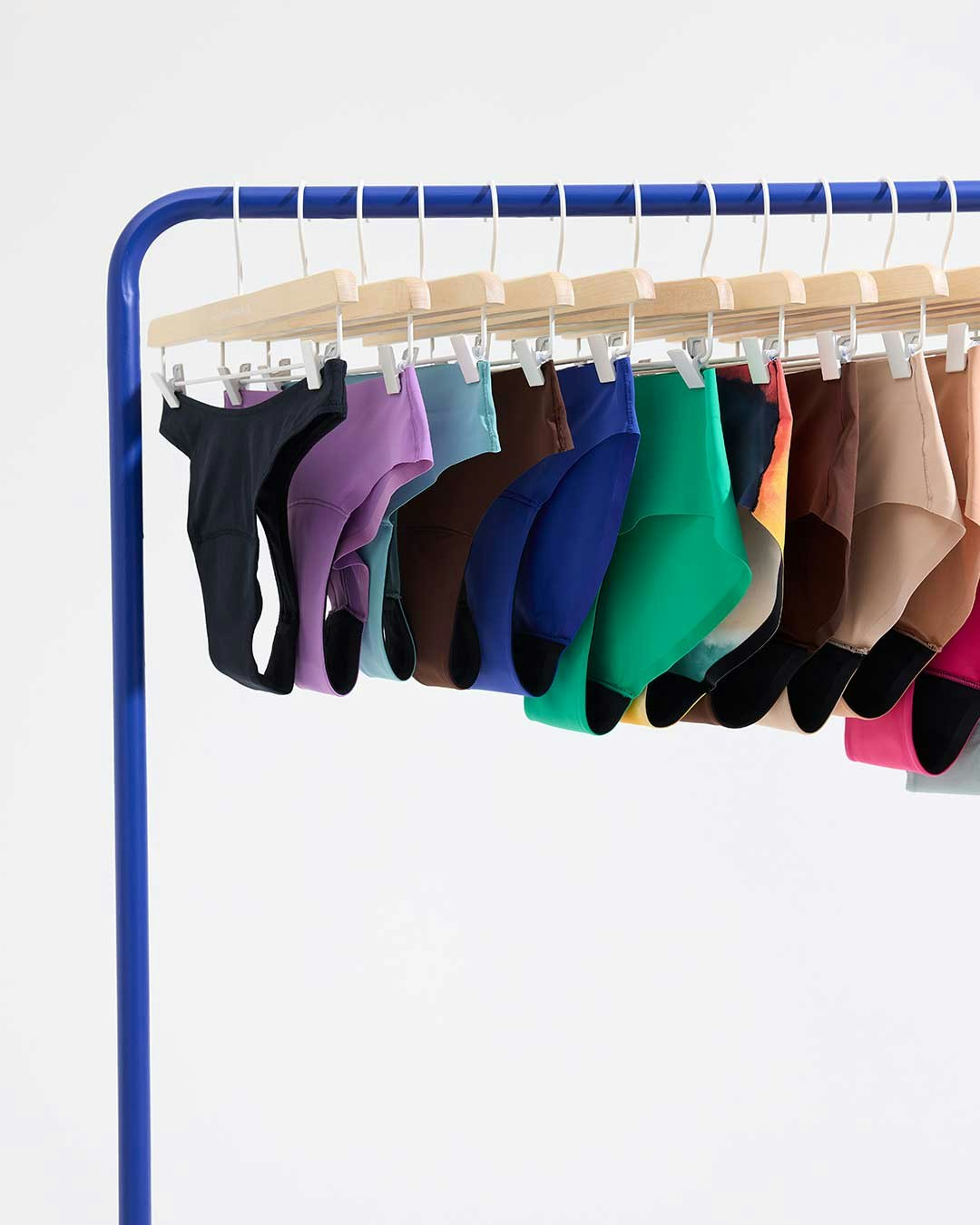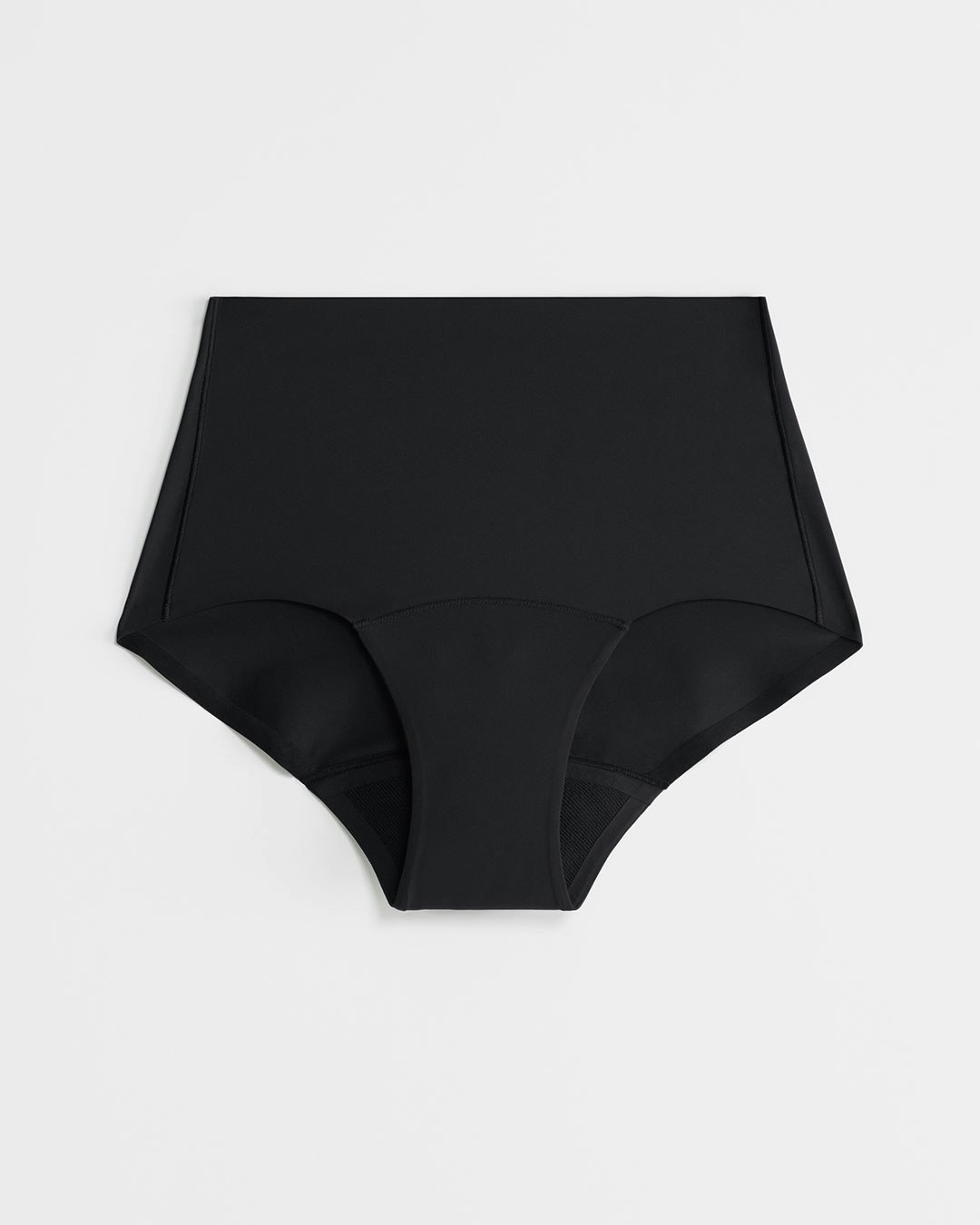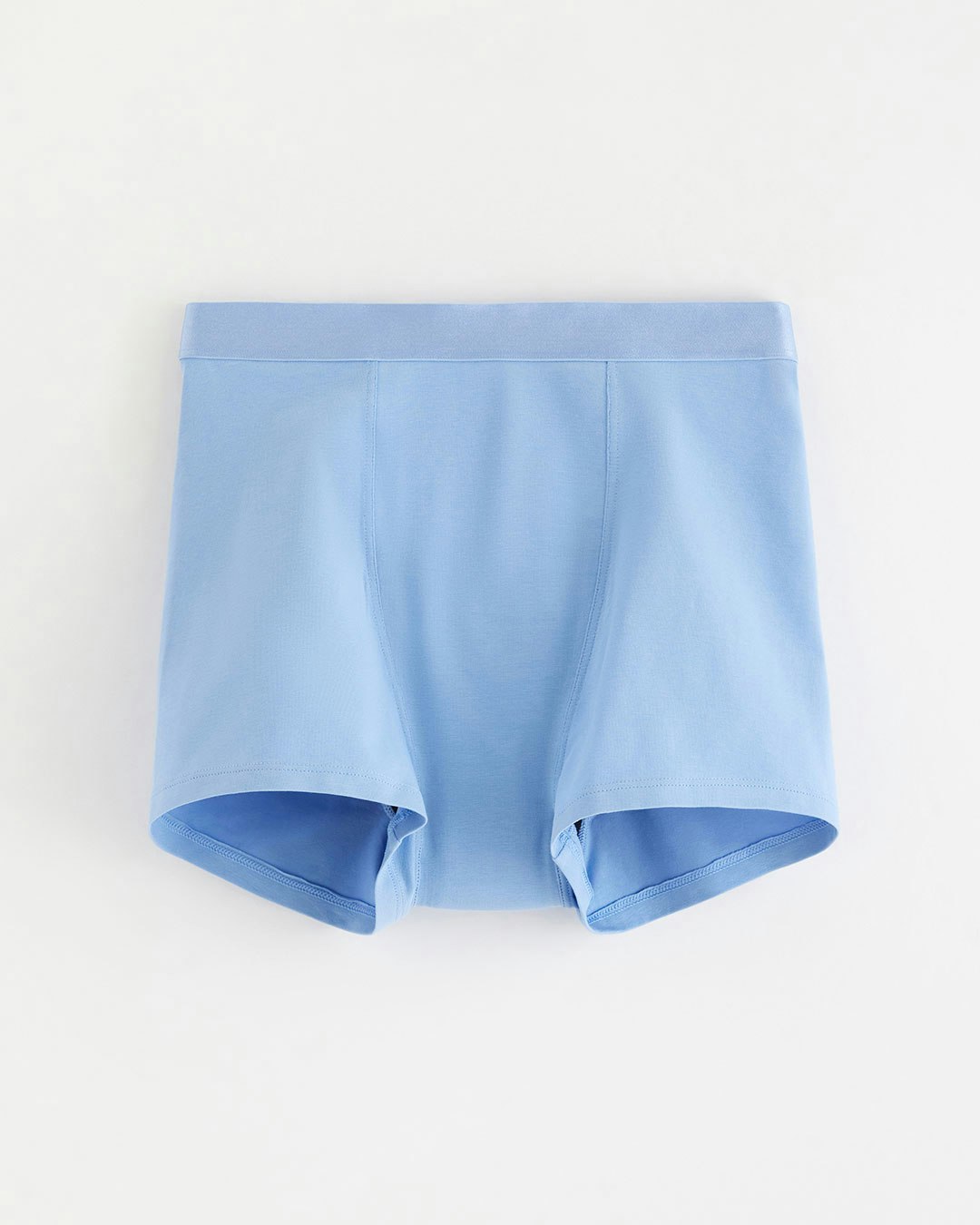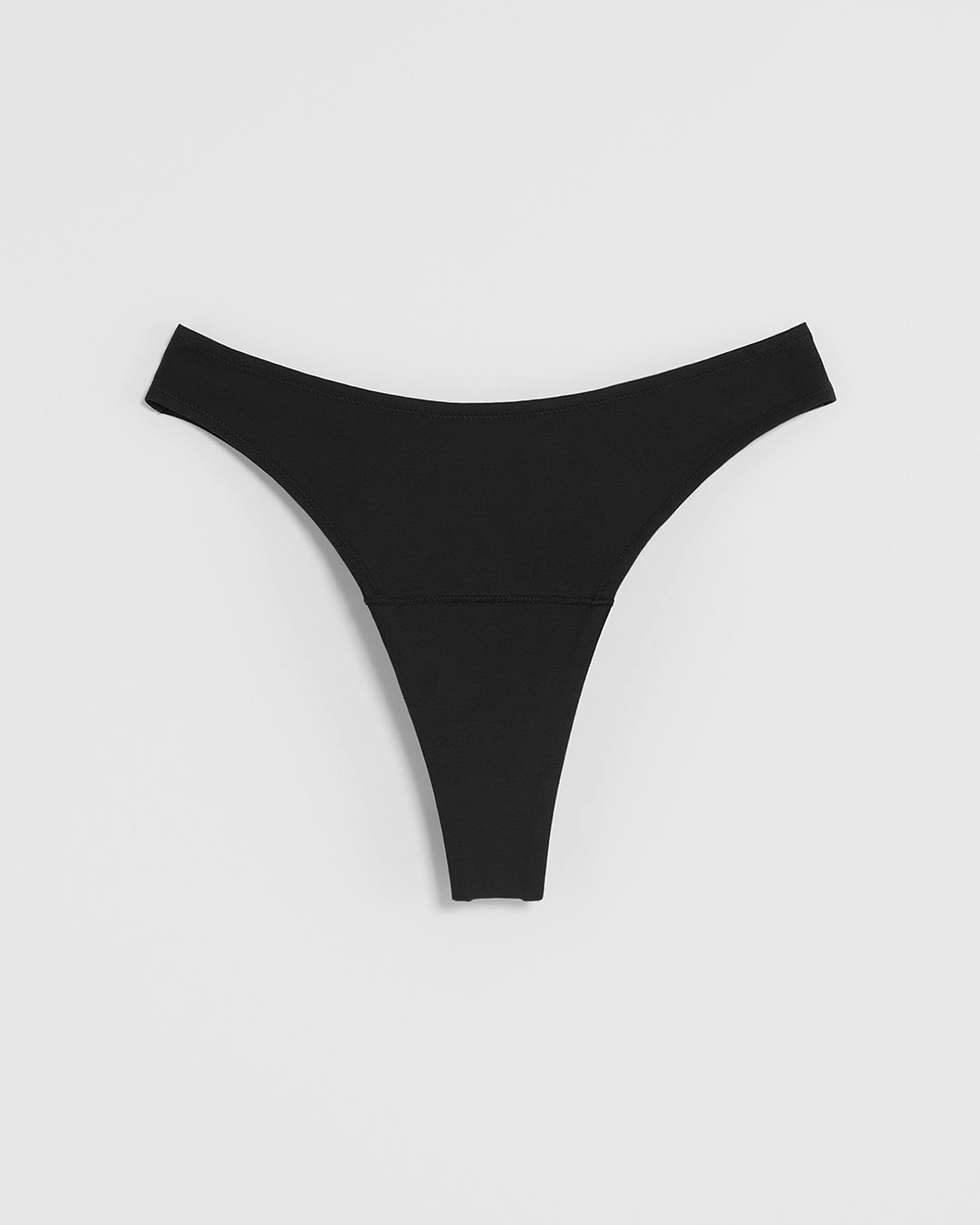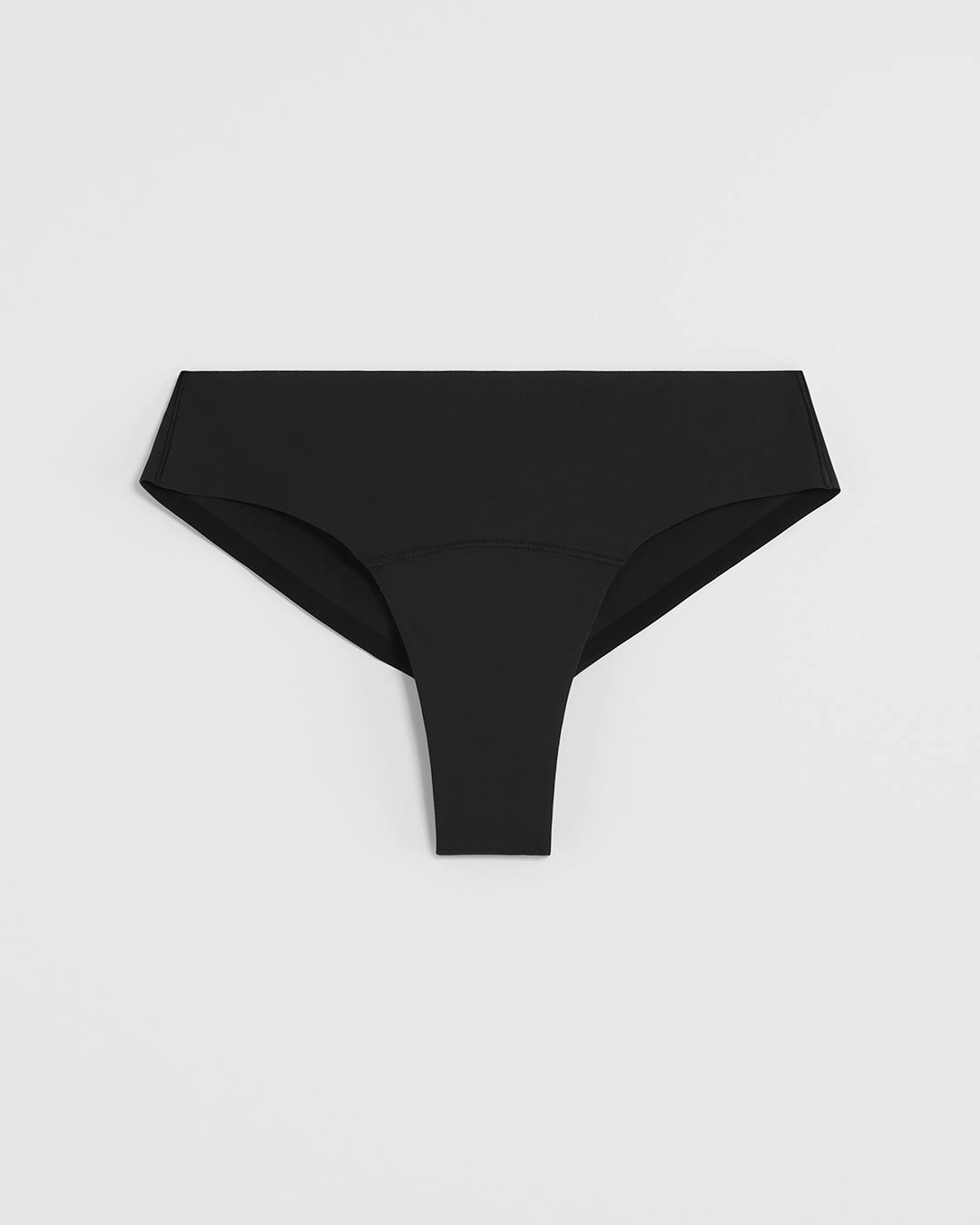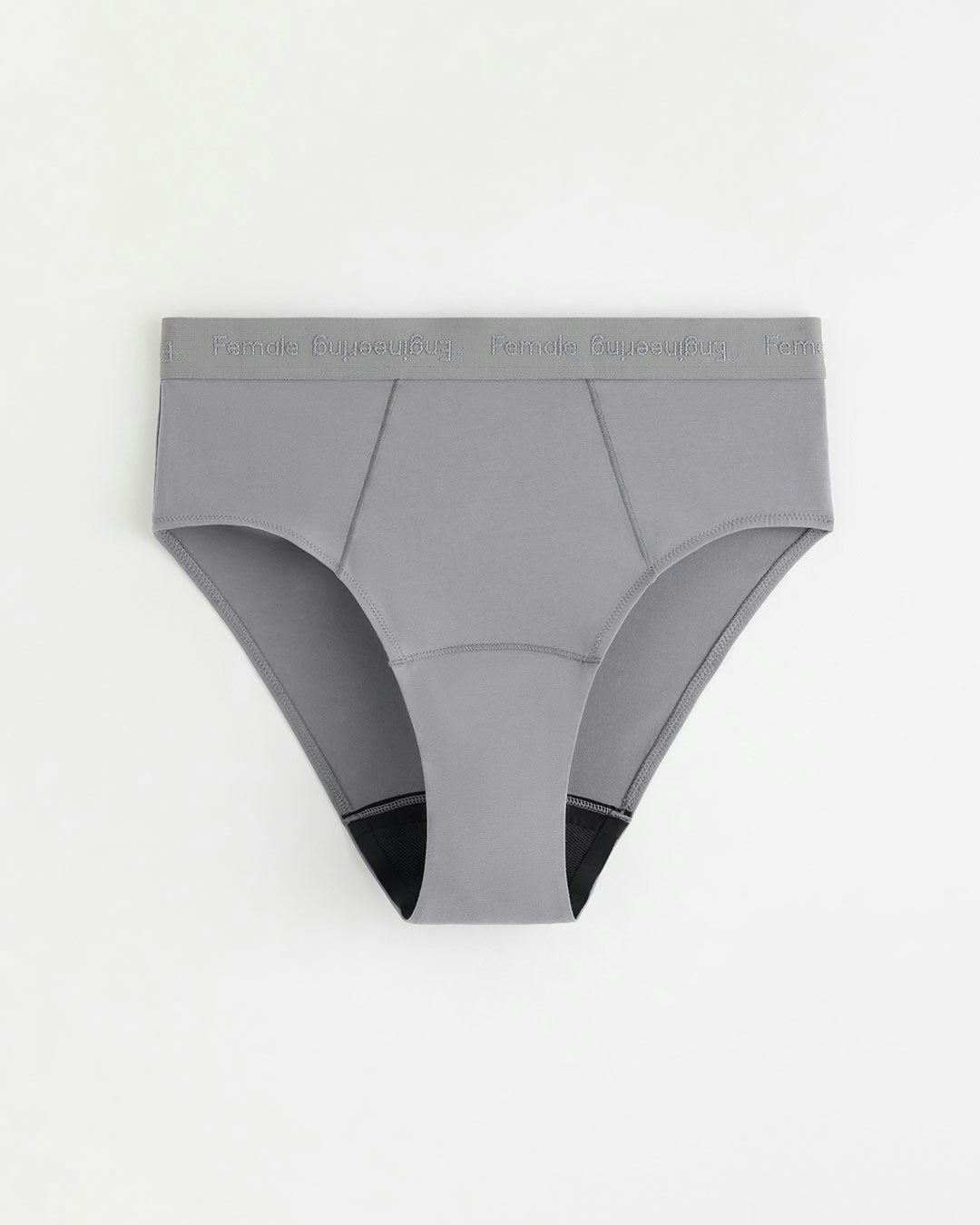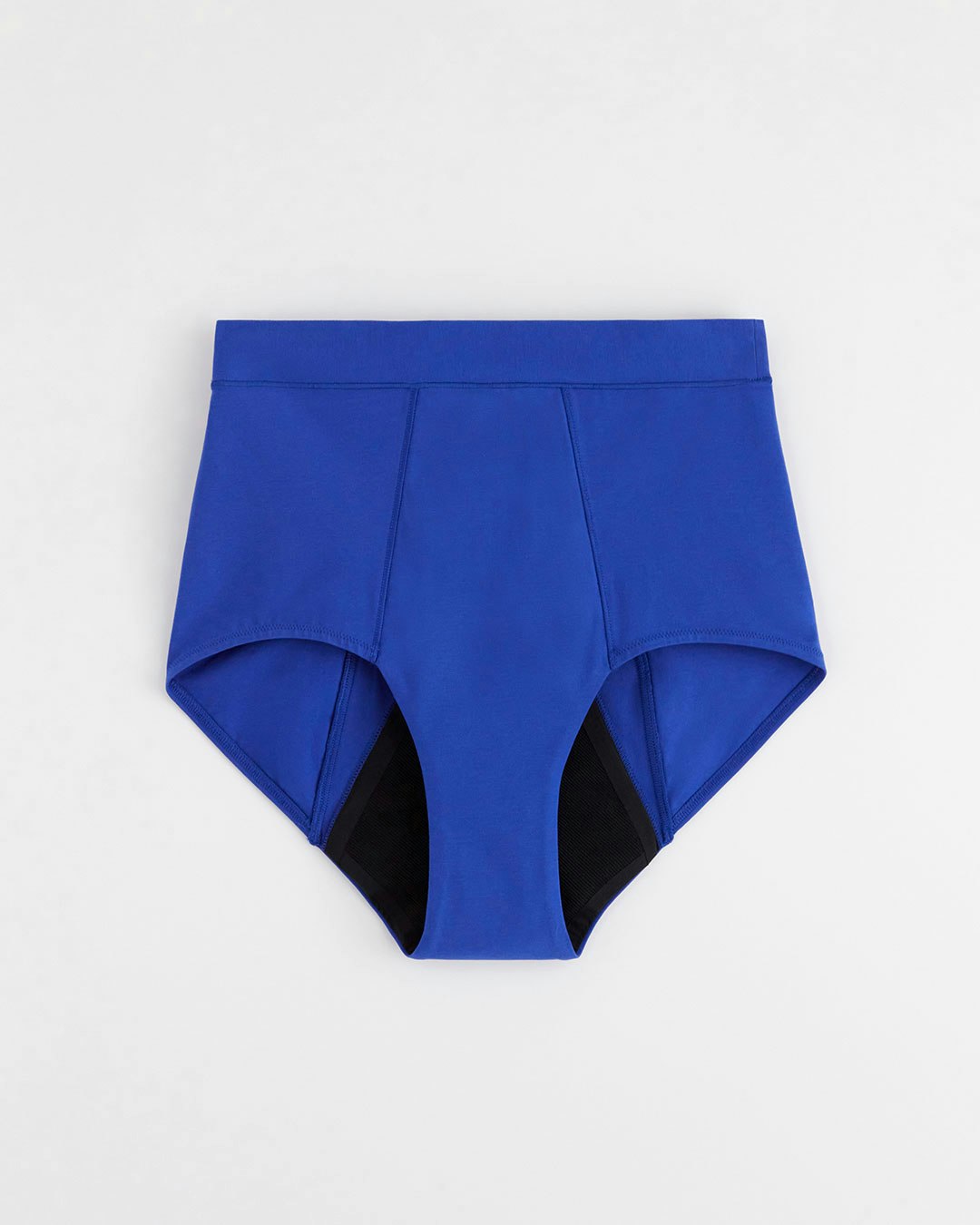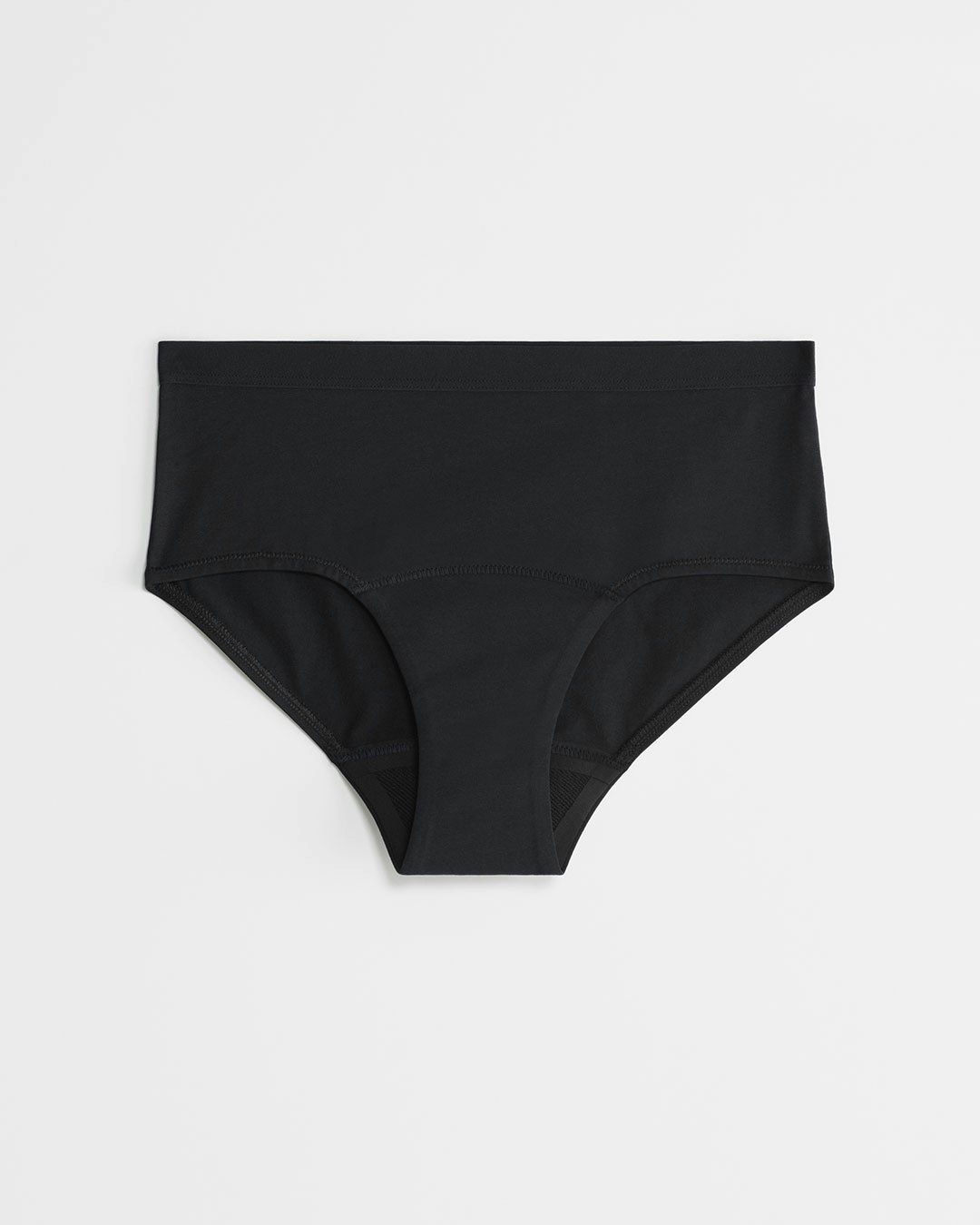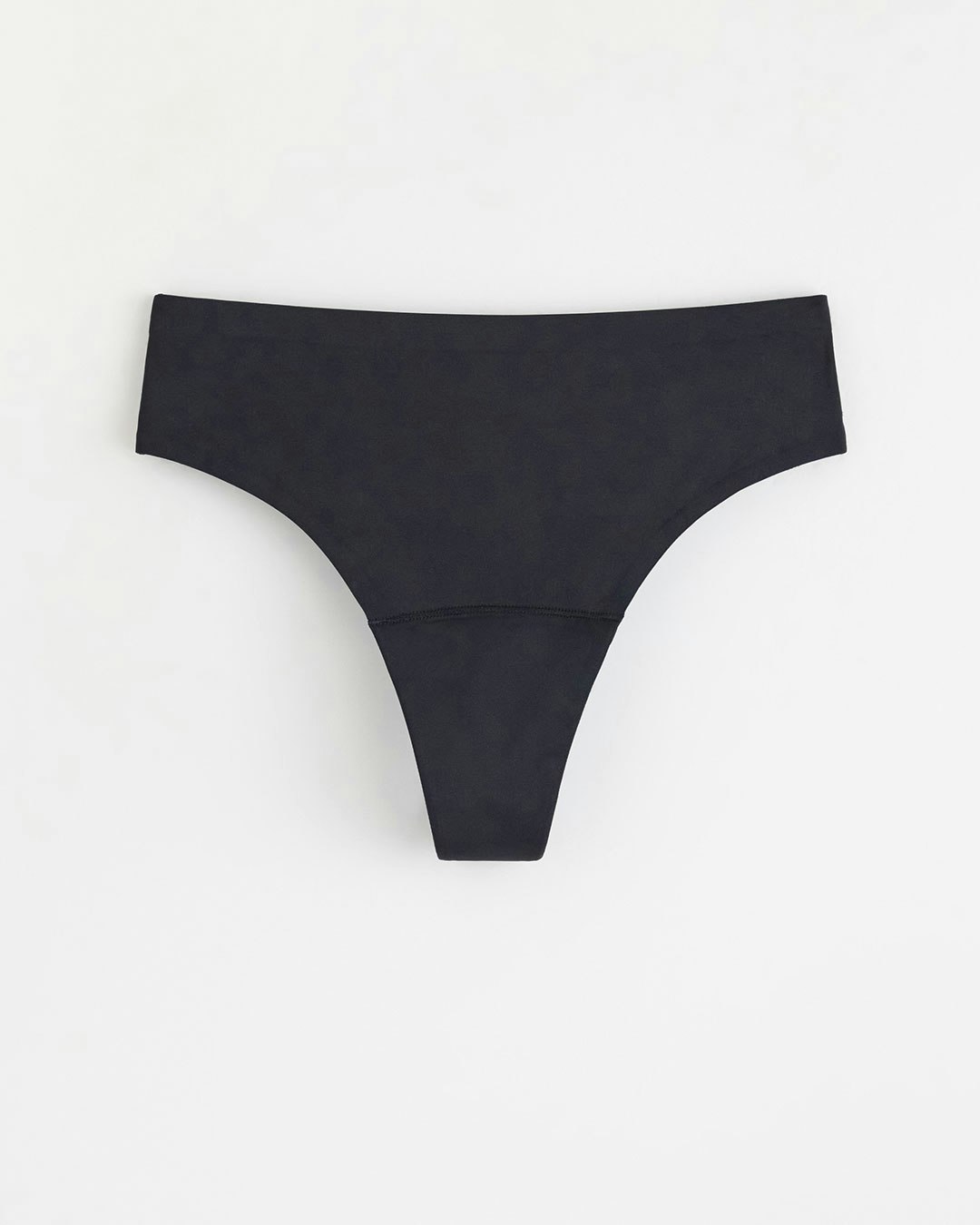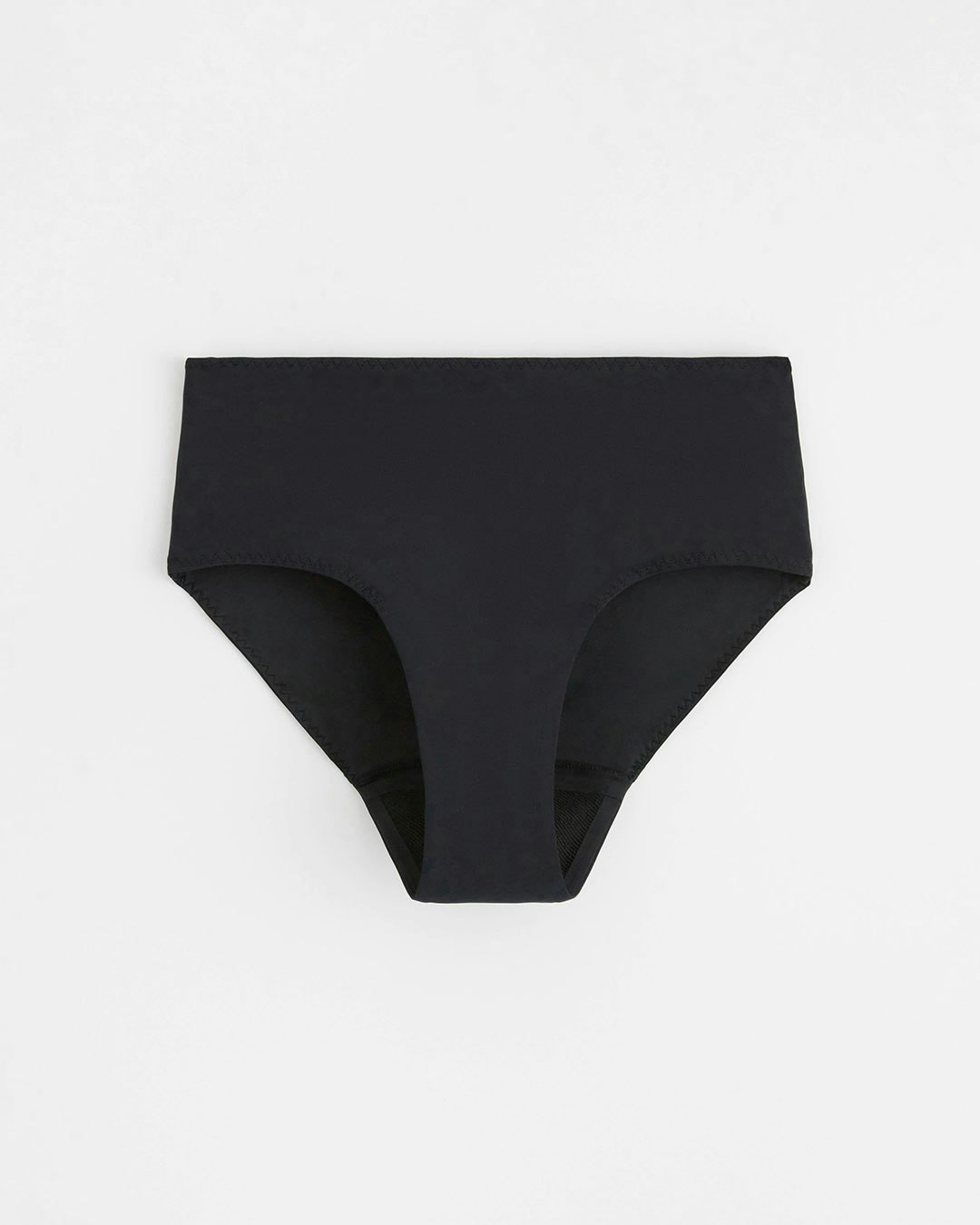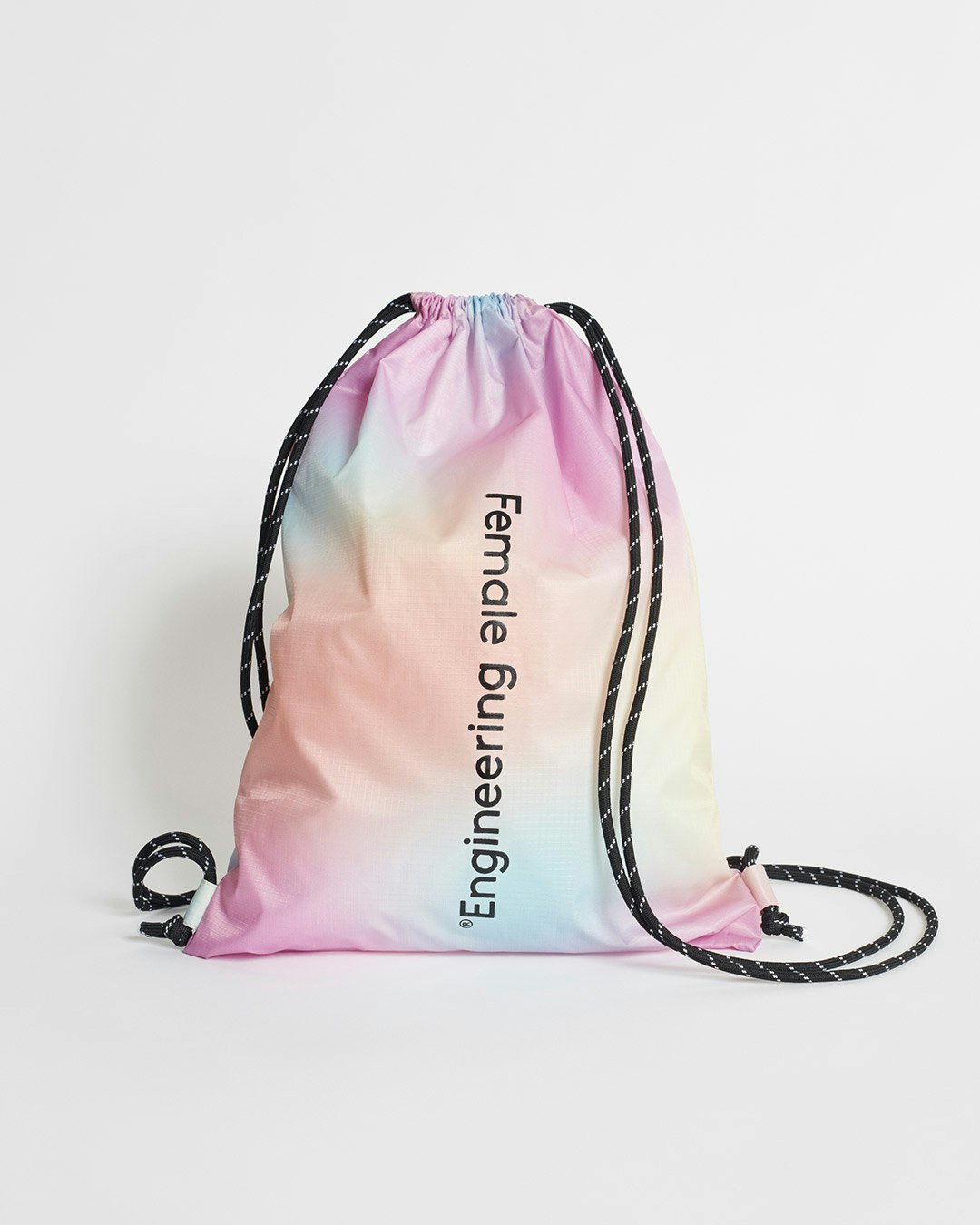Understanding the menstrual cycle
The menstrual cycle is so much more than just your period. It's a complex and extraordinary system that impacts your body and your mind every day. Everyone's experience is unique, but some things are more common than others. Here are some basic facts about the menstrual cycle and its different phases.
What is a menstrual cycle?
Basically, the menstrual cycle (or period cycle) is the recurring biological process where a body with ovaries prepares for a potential pregnancy. This involves loads of hormonal changes, ovulation and the build-up and shedding of the uterus lining – more commonly known as menstruation or a period. The cycle is different for everyone, and can also change throughout life due to age, stress, illness or lifestyle changes.
If you experience irregular periods or discharges, period panties are a trusty companion to keep in your bag (or on you) for those days when you’re unsure of what to expect but want to feel completely secure.
How long is a menstrual cycle?
Your menstrual cycle is counted from the first day of your period until the first day of your next period. And just like we said above, the length of the cycle is individual (as with almost everything regarding your period) and varies from person to person. What counts as an irregular or normal menstrual cycle is different for everyone, no one bleeds like you. Usually though, an average cycle lasts for anywhere between 21 to 40 days and consists of four phases.
What are the four phases?
The menstrual cycle is usually divided into four different phases: the menstrual phase, the follicular phase, the ovulation phase and the luteal phase. Let’s go through them one by one.
Menstrual phase:
The period cycle begins on the first day of your period when the uterine lining sheds if pregnancy hasn’t occurred. This shedding results in menstrual bleeding.
At this time your oestrogen and progesterone levels are at their lowest, and many experience lack of energy, cramps, tender breasts, irritability, and/or mood swings. If you’re a heavy bleeder, now is the time for super protection with our period panties with high or super absorbency – also great for sleeping in. Or, for average bleeders, try our hiphugger period panties with medium absorbency.
Follicular phase:
This phase also begins on the first day of your period, and the menstrual phase is part of the follicular phase.
During this time, the reproductive hormone FSH and the oestrogen levels start to increase. This can give you a boost in energy and good mood thanks to the oestrogen dampening the stress effects in the body.
Ovulation phase:
At the end of the follicular phase the reproductive hormones FSH and LH, as well as the oestrogen levels, peak. In a typical cycle of 28 days, ovulation usually occurs on day 14.
During this time, some may experience an increased amount of discharges, higher body temperature and sex drive. If you experience a lot of discharges, a lighter protection like our pantyliner with mini protection is the ultimate companion for extra comfort.
Luteal phase:
The day after ovulation, the luteal phase starts. Now, the hormone progesterone is produced to prepare the uterus for pregnancy. If the egg isn’t fertilised, progesterone levels start to drop again.
At this time many people experience migraines, PMS, acne, increased body temperature, bloating and/or tender breasts. This phase also comes with decreased sex drive, anxiety, mood changes, increased appetite and trouble sleeping.
At the end of the luteal phase, both oestrogen and progesterone levels drop so low that the uterine lining sheds again, causing menstruation to begin and the cycle starts over. The body is pretty amazing, right?
Is bleeding between periods normal?
Bleeding between periods and occasional spotting can happen for various reasons and can be normal in some cases. For example, due to hormonal fluctuations, birth control or ovulation. But frequent or heavy bleeding between periods (also known as intermenstrual bleeding) could indicate underlying issues. If you have any concerns, it’s crucial to consult with a healthcare professional to rule out anything serious.
How can period panties help during your menstrual cycle?
Period panties are a game changer during your whole menstrual cycle. They provide the comfort you need throughout all the different phases. Great to have ready for discharges, spotting and both light and heavy flows. They cover it all.
Since the cycle is different for everyone, we’ve got a wide range of period panties to choose from.
A pro tip is to always carry a pair with you when you’re on the go, that way you’re ready for the unexpected at all times.
Discover all our period panties here. Are you unsure of what absorbency fits you? Don’t worry, we’ve covered that too in our absorbency level guide.
